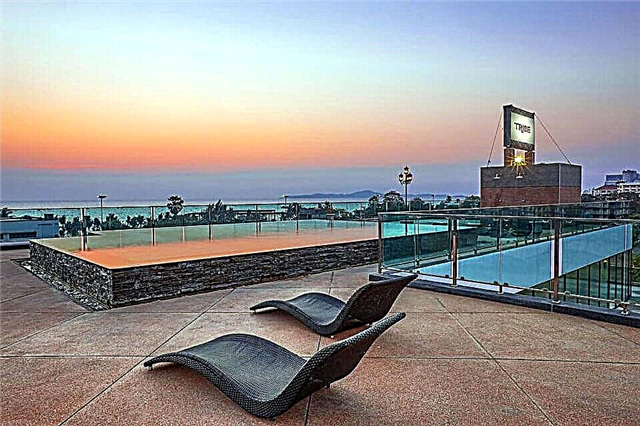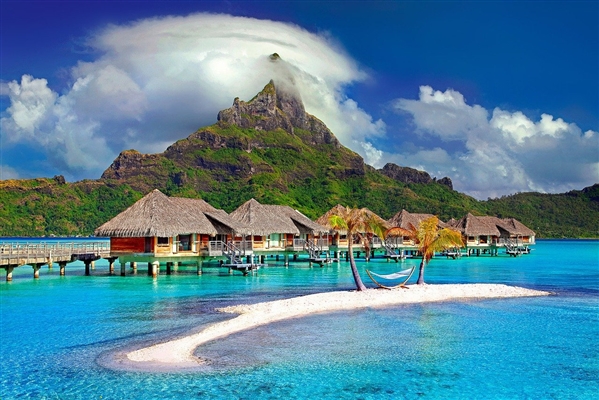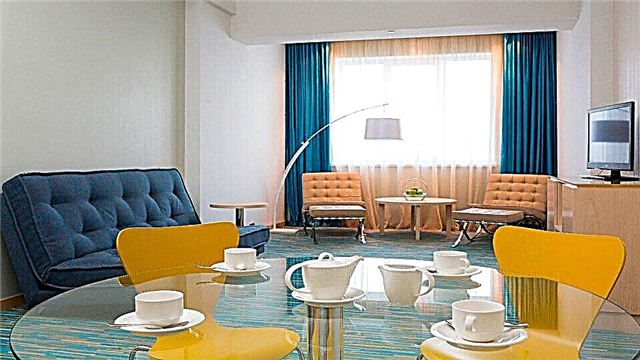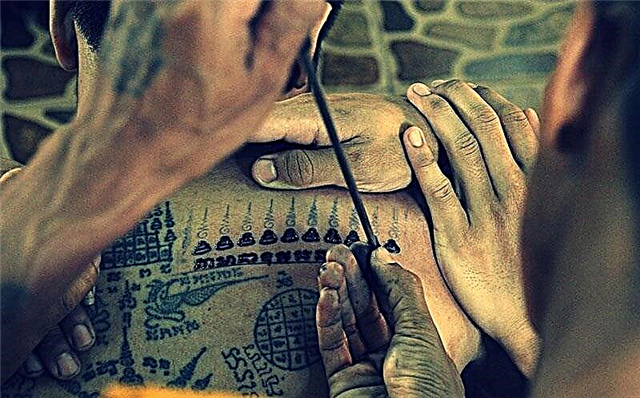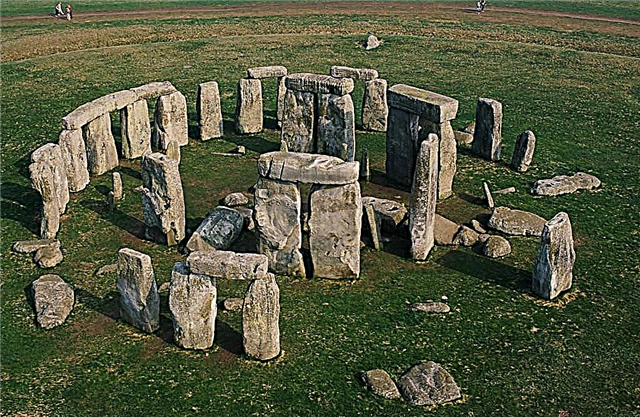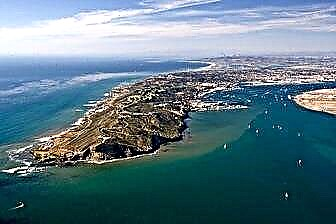San Diego is located near the Mexican border, on the Pacific Ocean. The city has a unique Spanish-American flavor, which attracts a considerable number of tourists. There is a fairly mild climate, excellent beaches and an incredible number of natural attractions. Just what are Balboa Park with its magnificent gardens and museums or the picturesque bay of La Jolla!
A traveler arriving in San Diego has the opportunity to see how one of the most prosperous cities in the United States lives. Cruise liners are constantly approaching the berths of the bay, snow-white yachts stand in orderly rows in the local marina, people stroll slowly along the city alleys planted with palm trees. San Diego is a haven of prosperity and prosperity, where people know how to enjoy life.

The best hotels and hotels at affordable prices.
from 500 rubles / day
What to see and where to go in San Diego?
The most interesting and beautiful places for walking. Photos and a short description.
Aircraft carrier USS Midway
The very first US aircraft carrier. He took part in the Vietnam War and in Operation Desert Storm in the Persian Gulf. For 47 years, he served in the US Navy. In 1992, the aircraft carrier was decommissioned and turned into a museum. Tours for visitors are conducted by volunteers from among the veterans of the fleet. They tell fascinatingly about the design itself and answer questions.

Point Loma
The Spanish navigator JR Cabrillo landed on the Point Loma peninsula in the distant 1542. In honor of him, a monument was built on the southern cape in 1939, from the observation deck of which a panoramic view of the San Diego Bay and the city opens. Another interesting historical building is a lighthouse from the middle of the 19th century. Today it houses a museum. A walking trail has been laid on the peninsula especially for tourists.

Balboa Park
San Diego City Park is larger than New York City's Central Park. On its territory there are 15 museums and exhibitions, 4 theaters, several thematic gardens and a zoo. Many buildings were built in the early 20th century in the Spanish colonial style. There are also small international cottages, where visitors can get acquainted with the culture and traditions of 30 countries.

San Diego Zoo
The San Diego Menagerie is considered one of the most progressive in the world. Its territory is home to 650 species of animals (more than 3700 individuals). The history of the zoo began after an exhibition of exotic animals in 1915. Many owners simply abandoned their pets after the event ended. To save the animals, the city government has allocated a piece of land in Balboa Park.

Botanical Garden in Balboa Park
The botanical garden unites several territories within its borders: the Japanese garden, the Alcazar garden, the children's ethnobotanical garden, the old cactus garden, the friendship garden and many others. The local diversity of plants will amaze even connoisseurs of flora: the species were collected not only throughout North America, but also imported from other regions of the world. There are greenhouses, artificial ponds and picturesque alleys.

Old Town San Diego
The Old Town is home to San Diego State Historic Park and Presidio Park. Here you can see what the first settlements of the colonists looked like, dine in one of the many Mexican restaurants and watch folklore performances. Sightseeing buses with guides in historical costumes run regularly around the Old Town.

San Diego Aerospace Museum
The exposition is located in the Balboa Park. The museum has several thematic sections dedicated to aircraft of the First and Second World Wars, the "golden age of aviation", modern space technologies, as well as other achievements in the field of aviation. The museum has restoration workshops and a library with technical literature. Many of the exhibits are original, others are copies of aircraft.

San Diego Maritime Museum
The museum opened in 1948. Its exposition consists of rare ships, each of which has its own unique history. Among the valuable items of the collection are the "Star of India", "Medea", "Berkeley", "Californian". In addition to ships, there is a variety of marine technology. The main goal of the museum team is to preserve the maritime heritage of the United States in general and the city of San Diego in particular.

National Monument Cabrillo
The monument is located on the Point Loma Peninsula. It represents the figure of the Spanish navigator J. Cabrillo, who arrived on the shores of Colorado in 1542 and founded the first settlement here. The monument was created in 1939 by the Portuguese sculptor Alvar de Brei. Near the statue there is a convenient observation deck from which you can admire panoramic views of the city and the bay.
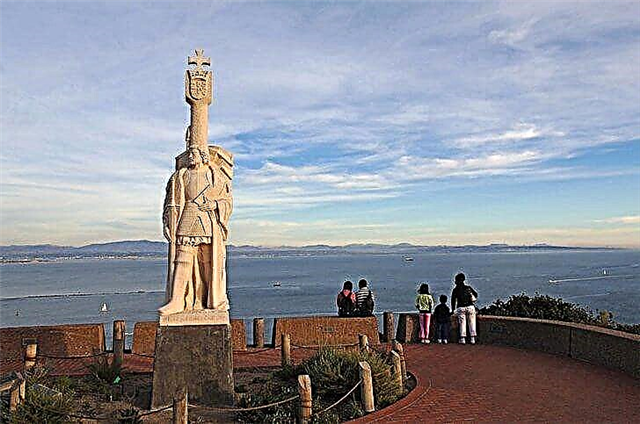
Sculpture "Unconditional surrender"
The styrofoam and aluminum sculpture depicts a sailor and a nurse kissing. The original sculpture was created by the American artist S. Johnson based on the photograph of A. Eisenstadt taken in New York on the day of Japan's surrender. For many Americans, this famous photo has become a symbol of the end of World War II. Johnson's sculpture is very popular with tourists.

Theme Park "Sea World"
The park is dedicated to the inhabitants of the world's oceans. Its history began in 1964 with the opening of a restaurant with a corresponding theme. The management then decided to create an entertainment zone for their clients and purchased sea animals. Literally in the first year of its existence, the park was visited by several hundred thousand visitors. It hosts a large number of entertaining shows involving dolphins, seals and whales.

Amusement Park "Belmont"
An amusement park in the beach area, created in 1925 by the tycoon D. Spreckels. There are still old carousels from the beginning of the century, such as roller coasters and the "giant bucket", but the most interesting for visitors are the new attractions. Also in "Belmont" there is a swimming pool, where swimming competitions are regularly held, a grill bar with a concert venue and a sports club.

Petko-park
The baseball arena that is home to the San Diego Padres. The stadium was built in 2004 to replace the old Qualcomm-stadium. If a tourist manages to get to the game, he will be able to fully enjoy baseball, as well as the atmosphere that prevails here during the competition. Most spectators don't even look at what is happening on the pitch. They are passionate about socializing with each other and eating burgers.

Mission San Diego de Alcala
The church was founded in 1769 by a monk from Spain, Junipero Serra. By 1862, it was already in ruins. The sluggish restoration of the temple continued until the 1930s. In 1941, San Diego de Alcala became a parish church. It still exists in this status. In 1976, the temple was visited by Pope Paul VI. The mission is listed as a US National Historic Landmark.

Fort Rosecrans National Cemetery
A military cemetery where American soldiers have been buried since the 18th century. The green lawns of the necropolis are strewn with even rows of modest graves with identical white tombstones. The place evokes philosophical thoughts. Here you can wander in silence and, under the measured hum of the ocean waves, think about the eternal. An active American army base is located next to the cemetery.

La Jolla bay
The bay is located in the northwestern part of the city. Translated from Spanish, its name means "jewel". The bay consists of sandy beaches, caves and rocks.In one of the parts of the coast, a seals rookery is arranged, which attracts a large number of visitors. The cove houses the eponymous residential area, which is considered one of the most prestigious in San Diego.

Torrey Pines Nature Reserve
A picturesque area covered with rocky plateaus, a favorite place for migrating sea birds. It is also home to coyotes, skunks, foxes and raccoons. Sometimes from the shore you can see huge whales frolicking in the ocean waters. The coastal zone of the reserve was chosen by local nudists. Torrey Pines has cycling and hiking trails for tourists.

Point Loma old lighthouse
The lighthouse stands on the peninsula of the same name. It was built in the middle of the 19th century, but due to an unfortunate location, it was closed by the end of the century (constant fogs obscured the light emanating from the lighthouse and the ships could not see it). Today, the building houses a museum exposition, where you can see the original furnishings, as well as historical maps and documents.

Coronado bridge
The San Diego Bay Bridge is not only a recognizable symbol of the city, but also an important transport artery. It was built in 1969. Its construction cost nearly $ 50 million. The structure is about 3.5 km long and stands on 27 concrete supports. Some of them reach a height of 60 meters. Thanks to the impressive size of the structure, large ships can easily sail under the bridge.

San Diego beaches
San Diego is often called the city of beaches and parks, as its territory stretches along the coastline for many miles. In total, there are more than 30 beaches suitable for swimming. The most popular and most visited are Pacifi Beach, Ocean Beach, Coronado, Torrey Pines and La Hoya. The ocean warms up to a comfortable temperature by mid-May and begins to cool by the end of August.


